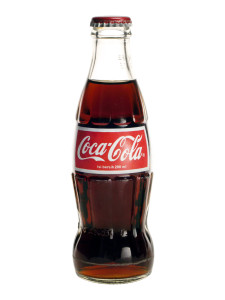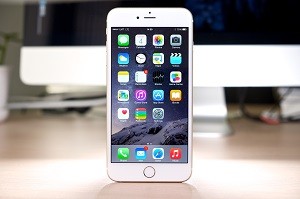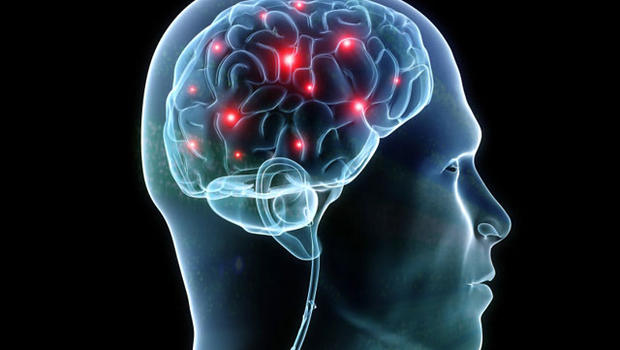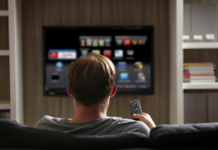Consumer News
By Megan Nichols
You’ve finalized your product design. It looks great, is useful and is unlike anything your customers have ever seen. But is that enough?

As you might surmise, the answer is “No.” History is littered with too many products that fell by the wayside, despite meeting all the criteria mentioned above. Conversely, plenty of products held on to decades-long “secret” formulas (e.g. Coca-Cola), yet managed to keep a solid grip on their market share to this day. Clearly, there’s more to product design than aesthetics, utility and innovation (although those are important, to be sure).
If you feel your product needs a few more tweaks, try viewing it through a psychological lens. Will your ideal customer look at it and say “Wow, gotta have this”? Or will they take to the Internet and describe it as “terrible,” or heaven forbid, “forgettable”? To answer these questions, let’s talk about what makes buyers tick, and how you can use that to your product’s advantage.
You’re Susceptible to the Principles of Influence
In his book “Influence: The Psychology of Persuasion,” Dr. Robert Cialdini outlined six principles of persuasion:
* Reciprocation. When you perceive that a person has done you a favor, you feel obligated to return it. For example, if you offer a free sample of corned beef in the supermarket, and a buyer accepts it, that buyer is more likely to purchase the actual product, because they feel compelled to reward your initial “generosity.”
* Social Proof. When you don’t know what to do next, you look to others for ideas. If you’re not sure whether an aging cream works, then a glance at the “Before” and “After” pictures of someone who used the same cream can convince you about its efficacy.

* Commitment and Consistency. If you have an existing ideal about who you are, or who you want to become, you want your image to be consistent with that ideal. So when you picture yourself as “cool,” and people like Steve Jobs market Apple products for cool people, you reinforce that self-image by purchasing an iPhone, iPad or what-have-you.
* Liking. This may sound intuitive, but you tend to gravitate to people you like. Generally, “likeable” people are good-looking, similar to you in some way and/or have pleasing personalities. If you know someone who has two or more of those qualities, hiring them as product endorsers may be a good idea.
* Authority. You also like people who know what they’re talking about (or, at least, look like they know what they’re talking about). That’s why celebrities with beautiful locks endorse shampoo, top-seeded athletes endorse energy drinks and so on.
* Scarcity. The rarer it is, the more valuable. Examples include jewelry, museum artifacts and bargain deals in clothing stores “for a limited time only!”
Keep in mind, however, that these principles work best when certain conditions are met. Cialdini discusses those in detail in his book, so it’s strongly recommended to get a copy if you’re serious about grasping the basics of marketing.
You Constantly Look for Patterns
Whether you’re aware of it or not, your brain is always filling in the blanks. When randomly-shaped figures are placed together, you may “see” things that may or may not be there. That’s what you call the Gestalt Principle.
See, pattern recognition was useful back when your ancestors were exploring the world. If you’ve seen a saber-toothed tiger before, and you spot a pair of feline eyes and teeth in the bushes, you’d take it as a cue to run in the other direction ASAP.
When applying this to a business context, it’s essential to view your product from every possible visual angle. Otherwise, you’ll commit a gaffe like Starbucks did last Christmas. To refresh your memory, the coffee chain launched a cute polar bear cookie, complete with a red scarf that resembled something more horrifying. Yikes!
We Gravitate Towards Human Faces

Imagine a picture of an apple. Then, imagine another picture, this time of a pretty girl biting into the same apple and enjoying it. Which picture do you think will convince people to buy the apple? Your guess is as good as ours.
As mentioned above, you like those who are the same as you — in this context, other humans. Also, you’re hardwired to read and react to facial expressions, a useful skill when socializing with others. If you want customers to feel good about your product, it’s a good idea to use human endorsers who wear expressions associated with positivity, like happiness, pleasure, etc.
We Respond to Color and Other Visual Cues
Ever notice how fast-food chains incorporate red or yellow in their logos? That’s because these colors are associated with hunger and excitement. Likewise, bright colors are associated with energy and happiness, making them ideal for candy packaging and the like. It’s important to consider what will surround your product on the shelf because it will help you decide what colors schemes will make your package stand out amongst the rest.
Colors aren’t the only visual cue you respond to, though. You also have program context, which dictates things like how you navigate supermarkets, how you read text on a website, how photos in brochures make you want to flip the pages, etc. The best designers are aware of this, and incorporate them so skillfully into the final product, your customers will hardly notice.
On a final note, it should be emphasized that these psychology concepts should not be used to take undue advantage of customers. It’s more important to back them up with a solid product first. That way, you bring in buyers today, and continue to bring them in the years to come.
ABOUT THE AUTHOR
 Megan Nichols is the editor of Schooled by Science. She enjoys writing about the latest innovations in technology and science.
Megan Nichols is the editor of Schooled by Science. She enjoys writing about the latest innovations in technology and science.
Don’t forget to follow us on Facebook for more reviews from NewsWatch TV.











It’s great that you are getting thoughts out
of this post as well as from your dialogue made at the place.
When someone writes an component of writing he/she keeps the idea of the user
in their/her brain that the way a user can understand it.
Therefore that’s why this paragraph is amazing.
Thanks!
Good day I am so grateful I found your weblog, I really found
you by accident, while I was looking on Askjeeve for something else, Anyhow I am here now and would just like to say
thanks for a remarkable post and a all round entertaining
blog (I also love the theme/design), I don’t have time to browse it all at the minute but
I have bookmarked it and also added in your RSS feeds, so when I have time I will be back
to read a lot more, Please do keep up the superb work.
These are generally truly fantastic ideas in regarding blogging.
You possess touched some pleasant factors here. Any
manner keep up wrinting.
Very good info. Lucky me I ran across your internet site accidentally (stumbleupon).
I actually have book-marked it for later!
Today, I went to the beachfront with my children. I found a sea shell and gave it to my 4 year old daughter and said “You can hear the ocean if you put this to your ear.” She put the shell to her ear
and screamed. There was a hermit crab inside and it pinched her ear.
She never wants to go back! LoL I know this is totally off topic but I had to tell someone!
Hi! Do you know if they make any plugins to
assist with SEO? I’m trying to get my blog to rank for
some targeted keywords but I’m not seeing very good success.
If you know of any please share. Many thanks!
Amazing things here. I’m very glad to peer your post.
Thank you a lot and I’m looking ahead to touch you.
Will you kindly drop me a e-mail?
Woah! I’m really loving the template/theme of this
site. It’s simple, yet effective. A lot of times it’s tough to have that “perfect balance” between user friendliness and looks.
I have to admit that you’ve done a superb job with this
particular. Also, the blog loads super quick for me on Safari.
Exceptional Blog!
I really like whatever you guys are up too. This kind
of clever work and reporting! Maintain the fantastic works guys I’ve incorporated you guys to blogroll.